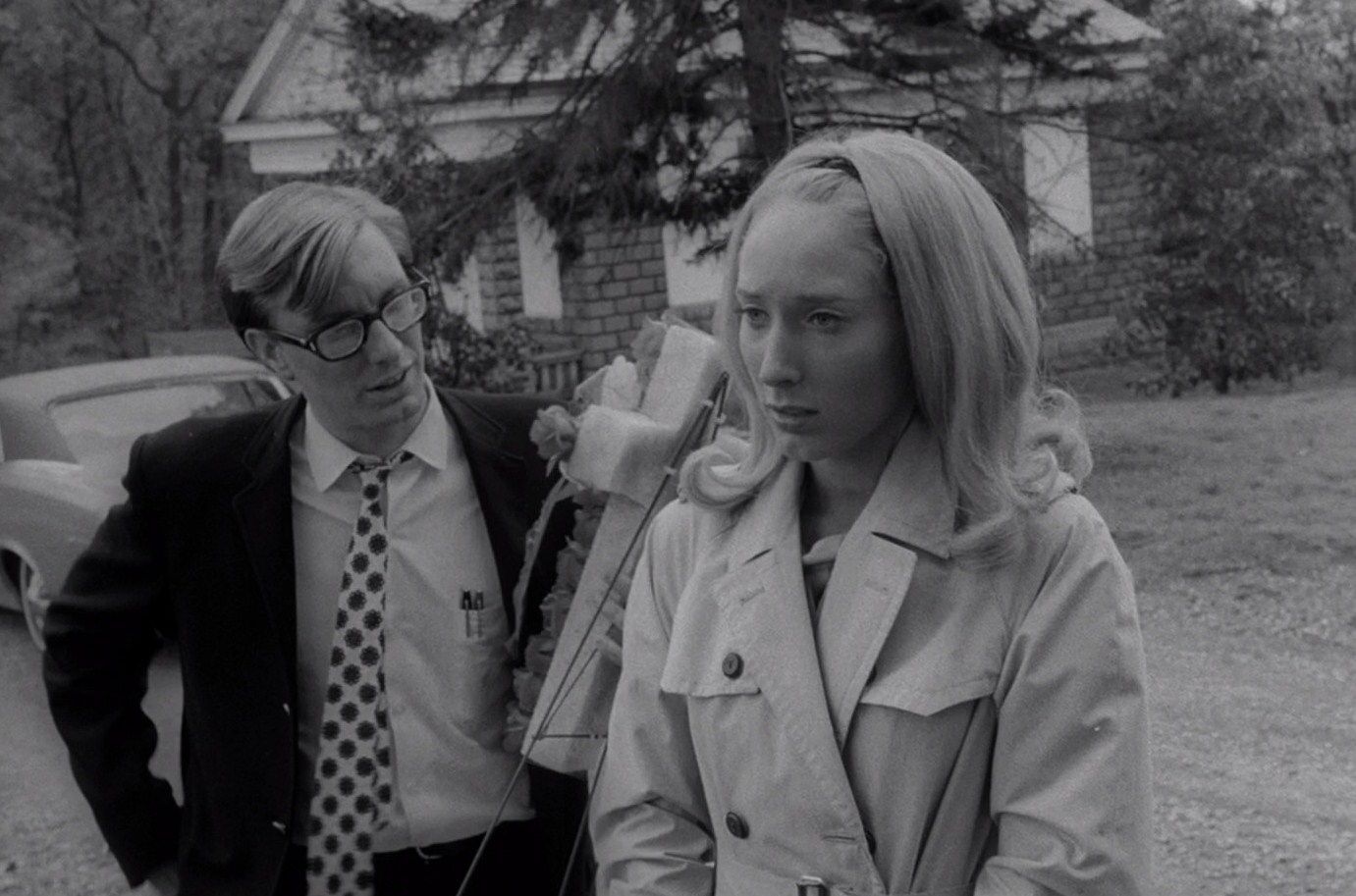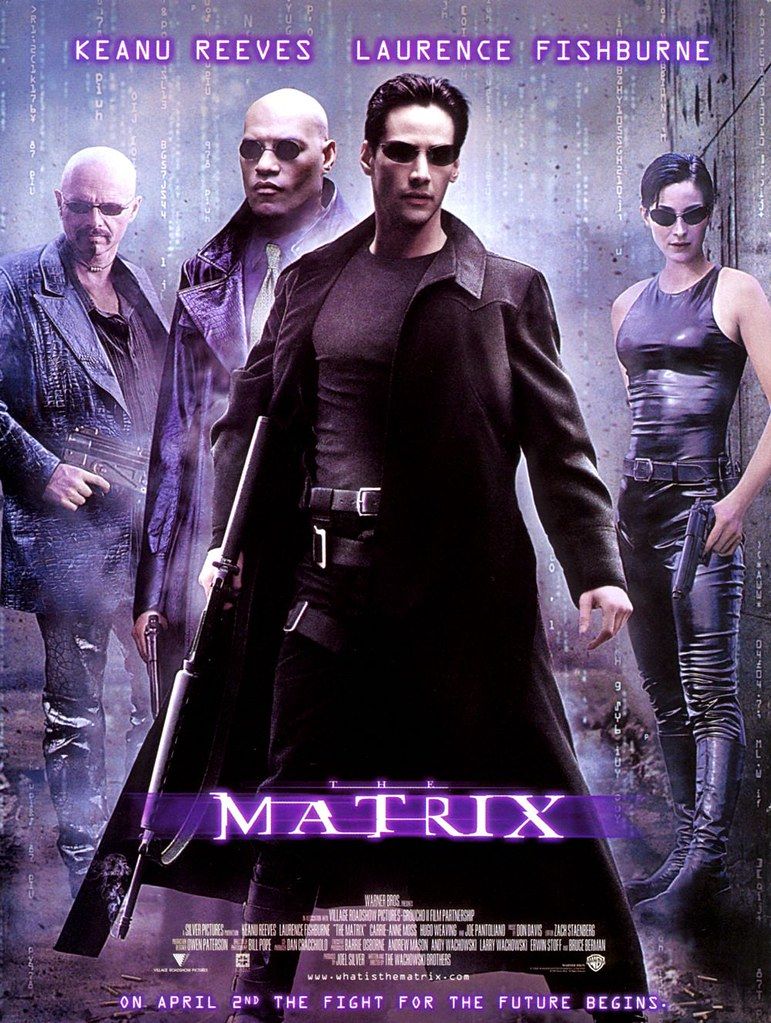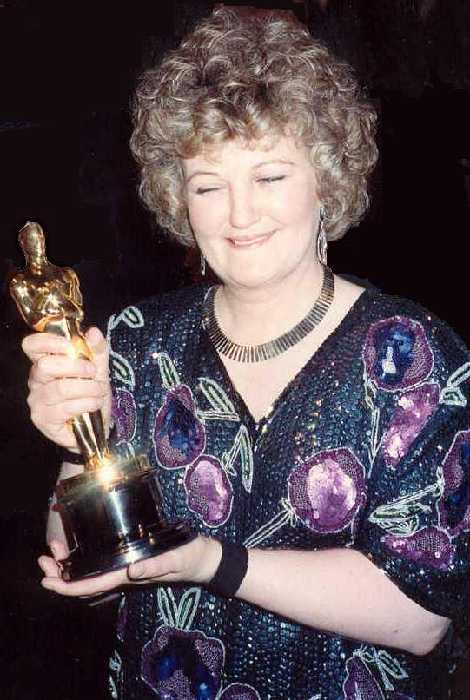
Brenda Fricker, the acclaimed Irish actress whose nuanced performances have captivated audiences for decades, recently shared profoundly personal insights into her health and life experiences, painting a poignant picture of vulnerability and resilience. Known globally for her Oscar-winning role in “My Left Foot” and her memorable portrayal as the ‘pigeon lady’ in “Home Alone 2,” Fricker has always been a figure of quiet intensity on screen. However, a recent interview has peeled back the curtain, revealing the significant struggles that underscore her enduring spirit.
Her candid admissions regarding her current physical state and past traumas are not merely a celebrity disclosure but a significant act of transparency, resonating with a broader human experience. As she prepares for the release of her memoir, “She Died Young: A Life in Fragments,” Fricker invites the public into a deeper understanding of the battles fought both privately and publicly, offering a narrative that extends far beyond the accolades of her distinguished career.
This article delves into the various facets of Brenda Fricker’s life, drawing directly from her recent revelations. From her present health challenges to the formative, often harrowing, events of her childhood and young adulthood, we explore the extraordinary journey of a woman who has navigated profound personal adversity while leaving an indelible mark on cinema. Her story, as shared in her own words, is a testament to the complex interplay of pain, resilience, and an unwavering capacity for joy.
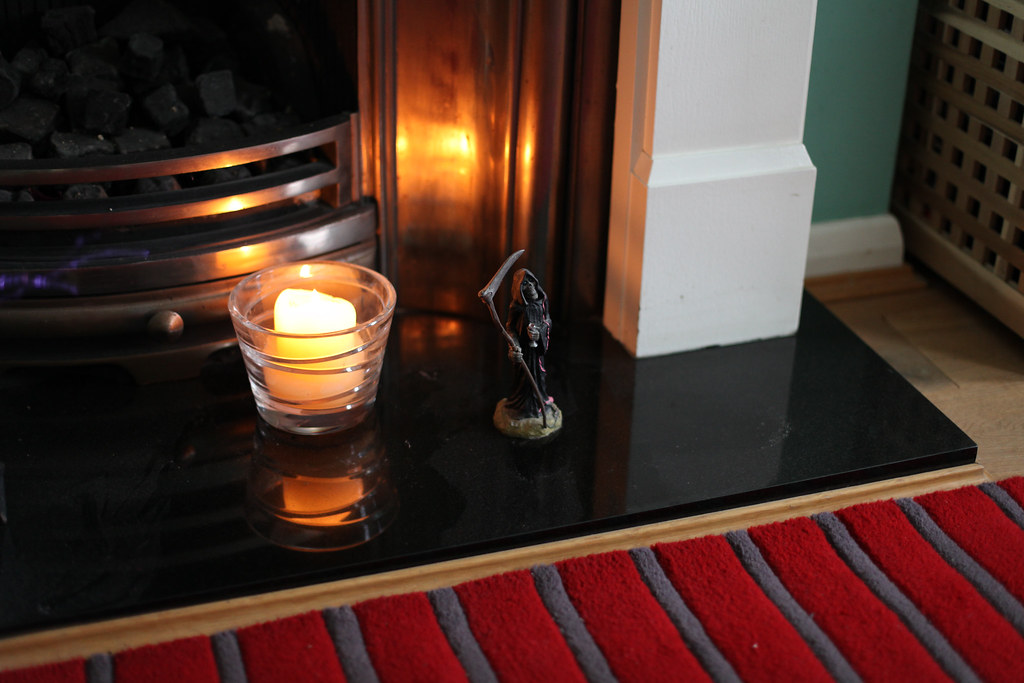
1. **Brenda Fricker’s Current Health and “Dreadful Death”**In a recent, rare interview, Oscar-winning actor Brenda Fricker has spoken openly about her severe health struggles, starkly stating she is “having a dreadful death.” The 80-year-old Irish star, currently confined to her bed in Dublin, described a daily existence marked by persistent pain, a condition that has significantly impacted her quality of life and energy levels.
Fricker conveyed a profound sense of weariness, an experience she describes as entirely new to her. She noted that merely talking leaves her breathless, confessing, “I’ve never known tiredness ever in my life.” This profound fatigue, combined with constant physical discomfort, has led her to moments of deep introspection, prompting her to question daily, “Will I ever get up again?”
Despite the gravity of her health situation, Fricker retains a characteristic wry humor. While lamenting her suffering, she ironically added, “I’ll probably live to be 100.” When specifics of her ailments were not elaborated upon, she did offer a glimpse into her coping mechanisms for sleepless nights, finding solace and distraction in television. She stated that watching “The Real Housewives of Beverly Hills” is a preferred activity, quipping, “It’s better than . It’s better than getting drunk. I just love it.”

2. **The Oscar-Winning Career**Brenda Fricker’s distinguished acting career reached a pinnacle in 1990 when she received the Academy Award for Best Supporting Actress for her role in Jim Sheridan’s “My Left Foot.” In the biopic of Christy Brown, a man born with cerebral palsy who could only control his left foot, Fricker delivered a powerful performance as Mrs. Brown, the protagonist’s steadfast mother, earning critical acclaim and global recognition for her profound portrayal.
Beyond her iconic Oscar-winning role, Fricker’s filmography includes a range of memorable characters that have endeared her to audiences worldwide. Perhaps one of her most widely recognized parts is that of the kind-hearted pigeon lady in the festive favorite “Home Alone 2: Lost in New York.” Prior to her Hollywood success, she had already established a strong presence in British television, notably playing nurses in popular series such as “Coronation Street” and “Casualty” in the late 1970s, marking the beginning of her six-decade-long career.
Her collaborative spirit and professional relationships are also highlighted by the continued connection she maintains with her “My Left Foot” co-star, Daniel Day-Lewis. Fricker revealed that he occasionally calls her, a testament to the lasting bonds forged on set. Their shared experience on the film not only resulted in dual Academy Awards but also in a professional respect that has evidently endured through the years.
Fricker’s diverse credits further encompass significant roles in acclaimed films such like “The Field,” where she performed alongside Richard Harris. She also appeared in the comedy “So I Married an Axe Murderer” and the crime drama “Veronica Guerin.” Her career, initially marked by early retirement intentions in 2014, saw a resurgence in 2021 with roles in “Holding,” based on Graham Norton’s novel, and the Channel 5 series “The Catch,” demonstrating her lasting appeal and talent. She also lent her voice to a deceased character in the 2023 film “The Miracle Club.”
Read more about: Robert Redford’s Love Story: Why His Wife Never Watched His Films & Their Decades of Private Devotion

3. **The Memoir: “She Died Young: A Life in Fragments”**Brenda Fricker has channeled her profound life experiences into a new memoir, aptly titled “She Died Young: A Life in Fragments.” Described as a “beautiful but raw” account, the book offers an intimate look into her tumultuous past and reflective present. It was conceived as a project to document a life lived with intensity, shaped by an array of challenging circumstances and unexpected joys, in collaboration with Deirdre Nuttall.
The inception of the memoir itself was fraught with difficulty, coinciding with a series of health setbacks for Fricker. She recounts starting the book at 76, healthy, before enduring “the first fall out of 11” during a trip to Galway with her collaborator. These incidents resulted in significant injuries, including both shoulders broken, one three times, leaving her with visible scars. Her psychiatrist in Beaumont, observing these events, humorously suggested, “I think, Brenda, this is a subtle attempt to get out of writing the book.”
“She Died Young” delves into deeply upsetting and sensitive subjects, offering unflinching honesty about parental abuse, ual violence, tuberculosis, serious mental health struggles, and miscarriages. Yet, amidst these harrowing revelations, Fricker also weaves in narratives of joy. The memoir highlights “wild times with her sister, Gránia, in Spain” and the exhilaration of performing music in New York pubs with a friend, as well as the inherent happiness derived from being on a theatre set.
Notably, Fricker had a personal aim while writing the book: to avoid any mention of “the Oscar word.” Despite her deliberate efforts, the esteemed accolade inadvertently “slipped into the final version,” much to her initial chagrin. This detail underscores her desire for the memoir to stand as a testament to her life’s journey, independent of her professional achievements, focusing instead on the deeply human experiences she wished to share.
4. **Early Life Hardships: Parental Abuse**The pages of “She Died Young” reveal a childhood overshadowed by profound domestic discord and parental abuse, laying bare a formative period marked by severe emotional and physical pain. Fricker recounts a neglectful father, Des, an Irish Times writer and RTÉ broadcaster, and a mother, Bina, a language teacher, whose behavior was “horrifically violent” towards her.
Fricker’s narrative does not shy away from the brutality she endured, explicitly stating, “It was real violence, and I needed protection.” She describes waking with “blood all over me. Blood seeping through the socks,” questioning why her father, whom she “worshipped,” failed to intervene despite clear evidence of the abuse. The pervasive societal norms of the era, where “In those days you didn’t interfere with your neighbours,” may have contributed to a culture of silence around such domestic matters, leaving her unprotected.
In these dire circumstances, her older sister, Gránia, emerged as a vital source of comfort and protection. Fricker describes her sister as a “saviour,” adoring her and recalling a poignant line from a poem she wrote: Gránia “stood in front and took the blows that Bina meant for me.” The sisters later sought to understand their mother’s behavior, finding a measure of solace when a surgeon suggested that a brain tumor, from which Bina later died, “could come with violence,” offering a potential explanation and some form of comfort for the deep scars left behind.

5. **A Childhood Marked by Illness and Accident**Beyond the emotional scars of her upbringing, Brenda Fricker’s early life was also physically impacted by severe trauma and illness. At the tender age of 14, she was involved in a horrific car crash, an incident from which she required two full years to recover. She suspects the car belonged to the Fianna Fáil minister Frank Aiken, although she remains unsure if he was the driver. The incident was so profound that it “broke my parents,” she states, and she suggests in her book that “the establishment closed ranks and protected him.”
Following this devastating accident, her teenage years brought further challenges with a diagnosis of tuberculosis. Fricker spent time in a sanatorium to combat the illness, effectively losing several crucial years of her development. These experiences, both the accident and the illness, occurred during periods critical for personal growth and education, leaving an indelible mark on her progression.
Reflecting on the long-term repercussions of these early hardships, Fricker initially considered that she “missed out on a lot” and that she “had a much greater capacity for happiness as a child. I don’t know where I lost that.” However, after a moment of contemplation, she revises her assessment, demonstrating a remarkable resilience and self-awareness, stating, “I have a great capacity for happiness, actually.” This reveals her enduring ability to find light even after significant darkness.
Read more about: The Shocking Truth: 13 Famous Faces Who Died Tragically Broke, From Hollywood Icons to Musical Geniuses

6. **Coping with Loneliness and Isolation**Brenda Fricker has spoken with candid honesty about the isolating realities of living alone, particularly during traditionally communal times such as the holidays. In a 2021 interview with Radio 1 about her Christmas plans, she disarmingly stated, “I would be lying if I said it would be a nice and happy Christmas because I’m old and I live alone. It can be very dark.”
To navigate these periods of potential loneliness, Fricker has developed specific coping mechanisms. She explained her routine for Christmas, which involves deliberately turning off her phone and drawing the blinds, creating a quiet, protected space for herself. Her strategy also includes pre-recording “some good programmes” to ensure she has engaging content to occupy her time, alongside the constant companionship of her dog, her loyal friend during solitary moments. “I get myself through it that way,” she shared.
Fricker carefully distinguishes her feelings about different holidays, emphasizing that while Christmas itself “I don’t find … all that difficult,” she finds “New Year’s Eve” particularly challenging. Her frank discussions about these personal experiences underscore a universal sentiment of vulnerability during times often portrayed as universally joyous, offering a relatable perspective to those who may face similar feelings of isolation. Her openness is a testament to her willingness to discuss realities often left unsaid.
Read more about: Beyond the Binge: Unpacking the Enduring Allure of Rewatching Old Sitcoms for Modern Audiences
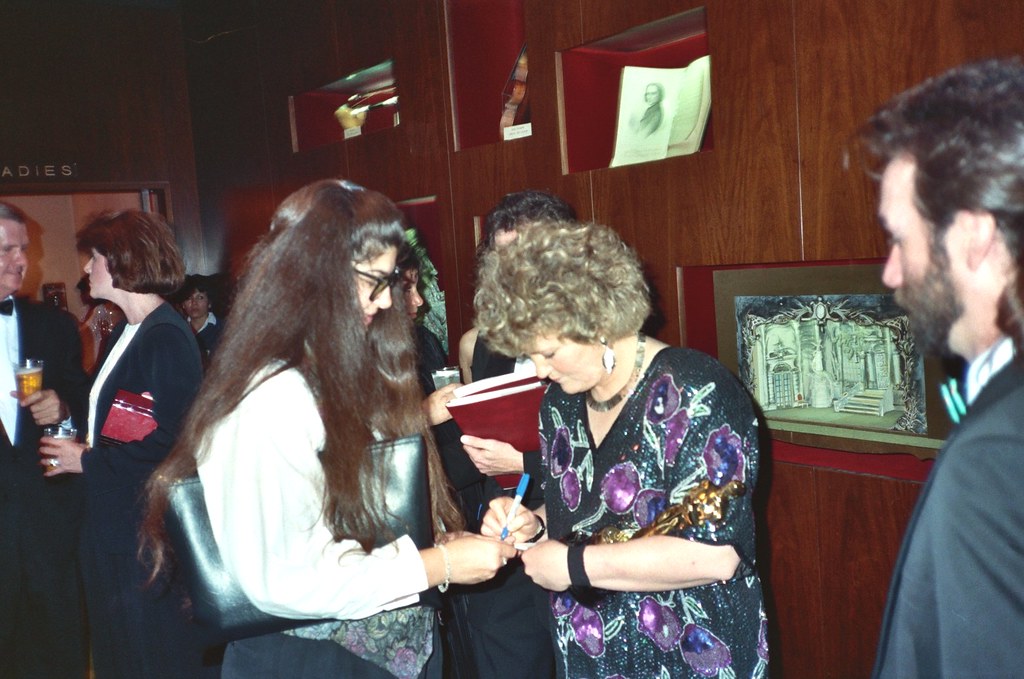
7. **A Complex Relationship with an Early Mentor**Brenda Fricker’s memoir, “She Died Young: A Life in Fragments,” also casts light on a profoundly complex and disturbing relationship from her childhood, detailed in a chapter concerning a man identified as Séamus S. This individual was her elocution teacher when she was eight years old, a figure she describes as having idolized for the encouragement and attention he provided, elements often absent in her home life.
However, Fricker’s narrative reveals a deeply unsettling aspect of this mentorship: Séamus S. regularly masturbated in her presence. Despite the gravity of such acts, Fricker maintains that she was never physically touched by him, nor did she feel frightened or threatened. She recounts a sense of receiving something emotionally from him that she desperately needed, contrasting with the lack of affirmation from her parents. She states, “What he wanted from me never frightened me, never threatened me. He never touched me.”
This early mentor continued to be a presence in her life well into adulthood, with Fricker reaching out to him for advice, indicative of a bond she perceived as friendship and loyalty. When confronted with the interviewer’s suggestion of grooming, Fricker expressed resistance to the idea of being categorized as a victim. She questioned, “I should be a victim?” and acknowledged her awareness of concepts like Stockholm syndrome, yet firmly asserted, “I’m just loyal to him.”
Her perspective on Séamus S. underscores a profound human capacity to process trauma and attachment in ways that defy conventional understanding. The memoir’s candid account of this relationship serves not only as a personal revelation but also as a challenging exploration of how emotional needs and societal silences can shape a child’s interpretation of disturbing experiences, making it one of the most unsettling, yet revealing, chapters in her life story.
Read more about: Stuart Craig, Visionary Production Designer Who Defined Cinematic Worlds From Hogwarts to ‘Gandhi,’ Dies at 83

8. **Long Struggle with Mental Health and Self-Harm**The memoir further delves into Brenda Fricker’s extensive and harrowing journey with mental health challenges, notably featuring a “very sad and harrowing stream-of-consciousness chapter” that vividly depicts her descent into mental distress. This unflinching portrayal offers readers a raw glimpse into the profound psychological battles she has endured throughout her life.
Fricker traces the origins of her self-harm, which began in childhood, to deep-seated feelings of self-hate. She links this directly to the parental abuse she experienced, stating, “When you get beaten up and don’t understand it …” The pervasive influence of Catholic imagery, particularly “The Stations of the Cross and the blood,” combined with her mother’s fervent Catholicism, also appears to have profoundly affected her and contributed to these self-destructive behaviors, at times even serving as a form of “revenge on Bina.”
Her struggle was marked by extreme severity, including 31 documented suicide attempts and numerous stints in hospital, painting a stark picture of a life lived on the precipice of profound despair. These incidents highlight the relentless nature of her internal battles and the desperate search for relief from overwhelming pain.
A turning point in her long battle arrived with her sessions with acclaimed psychiatrist Dr. Anthony Clare. Fricker credits him with facilitating her healing process, noting, “There was so much pain, but Anthony Clare, I don’t know how he did it, but he just eased it all down for me.” She attributes much of her progress to the simple yet profound act of being able to openly discuss her experiences and, critically, to accept them.
Today, Fricker describes her depression as “copable,” indicating a hard-won stability. She manages her condition with medication, including what she calls “the strongest antidepressant in the land.” Her journey through mental illness, as detailed in “She Died Young,” is a testament to both the crushing weight of depression and the arduous, yet possible, path toward managing and living with it.
Read more about: Angelina Jolie: A Journey of Art, Advocacy, and Evolution in the Public Eye
9. **Raw Revelations of Sexual Violence**Among the most difficult revelations in Brenda Fricker’s memoir are her accounts of two horrific rapes she experienced as a young woman. These deeply personal and traumatic events are described in the book with an unflinching honesty that is both courageous and profoundly upsetting, forming some of the most challenging passages for the author to write.
Fricker herself has spoken about the immense emotional toll of recounting these experiences, describing the process as “very, very hard,” involving “weeping and gnashing of teeth, as they say.” The act of putting such raw, painful memories into words years later underscores the lasting impact of ual violence and the bravery required to confront it publicly.
Despite the immense difficulty, Fricker’s decision to include these harrowing details in her memoir is rooted in a desire to provide solace and recognition to others who may have suffered similar fates. She articulated a clear purpose for sharing these darker stories now, at the age of 80: “There are women everywhere in the dark, and I know that reading other people definitely helped me to not feel as alone.” This intention highlights her belief in the power of shared experience to alleviate isolation, making the painful act of writing worthwhile “If it helps one person, it’s worth it.”
Her candidness on such sensitive subjects reinforces the memoir’s commitment to presenting a full and unvarnished account of her life, prioritizing authenticity and solidarity over personal comfort. These revelations serve as a poignant reminder of the unseen battles many individuals face and the transformative potential of storytelling as a means of connection and healing.
Read more about: Beyond Hollywood: 15 Must-Stream Foreign Films to Expand Your Cinematic Horizons in 2025

10. **The Poignant Story of Her Marriage**Brenda Fricker’s memoir also provides a deeply moving portrayal of her marriage to the late director Barry Davis, depicting a relationship that, despite its eventual dissolution, was imbued with profound love and joy. Her description of Davis is notably tender, highlighting his sensitive nature and the transformative impact he had on her life.
Fricker credits Davis with fundamentally altering her understanding of love, revealing a depth of affection and happiness she had not previously known. She describes him as an “amazing” individual who showed her that love could be “so beautiful and there’s so much joy.” This experience, she acknowledges, was “a huge thing” in her life, profoundly shaping her capacity for happiness and connection.
Their marriage ultimately came to an end due to Davis’s struggle with alcoholism, a tragic reality that overshadowed their bond. However, even after their divorce, Fricker and Davis maintained a close friendship, demonstrating an enduring respect and affection that transcended the difficulties of their romantic relationship. She notes, “He taught me respect … I definitely loved Barry, no doubt about that. But the drink, the drink, the drink.”
The story of Barry Davis concludes with a particularly poignant and tragic detail: he died at the age of 54 after falling down the stairs, found alone days later. Fricker recounts this with deep sadness, reflecting on the isolation of his final moments. She contrasts this starkly with her sister’s peaceful passing in her sleep, holding her dog, finding a measure of comfort in the presumed lack of turmoil. The inclusion of her marriage story illustrates the profound impact of love, loss, and the complexities of human relationships in her life.
11. **Practicalities of Later Career Choices**Brenda Fricker’s later career choices, as detailed in her memoir, reveal a pragmatic and often difficult reality behind the glamour of acting, particularly concerning financial stability. Despite her Oscar win and decades of work, Fricker found herself facing financial constraints that significantly influenced her decisions in the latter part of her professional life.
She openly discusses having lost money over the years, suggesting her finances were not managed as effectively as they could have been. This predicament starkly contrasted with her earlier aspirations of retirement. At 55, she had envisioned a serene life: “I thought I’d get 10 border collies, walk on Selerna beach … go out to the islands, go down to Coyne’s pub, where you can get the best pint in Ireland, get pissed with the fishermen and walk home and sleep. That was my plan.” The depletion of her savings made this dream unattainable.
Consequently, Fricker found herself needing to re-enter the acting world, a challenging endeavor for a woman of her age in a youth-centric industry. This necessity led her to accept roles she might not have otherwise, frankly admitting, “I had to do things I’d never done … I did some films I’m ashamed of and some I’m not ashamed of.” Yet, she still found projects she took pride in, such as her work in “Swann” with Miranda Richardson and the comedy “So I Married an Axe Murderer” alongside Mike Myers, which she fondly recalls as “great crack.”
Her resilience is evident in her continued engagement with acting, even in recent years, such as her role in Tadhg O’Sullivan’s film “The Swallow.” She notes that she took this role because she admired the director, underscoring that even when financial pressures loomed, her artistic choices were still informed by genuine connections and respect for creative collaborators. This illustrates the complex interplay of artistic passion and practical necessity in a long and distinguished career.
Read more about: Why James Cameron Still Grapples with One Major Regret from His Magnum Opus, ‘Titanic’
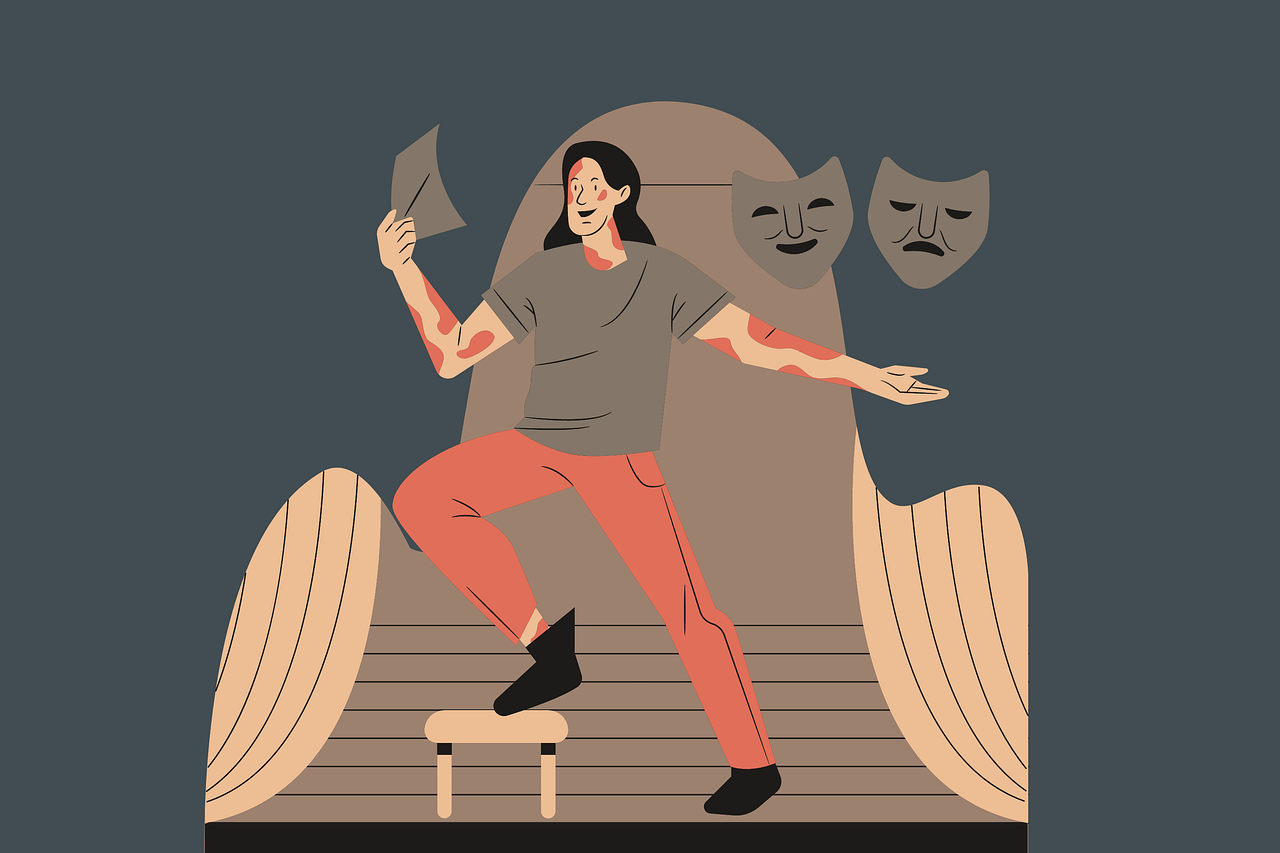
12. **A Unique Philosophy on the Art of Acting**Beyond the personal narratives and career highlights, Brenda Fricker’s memoir offers insights into her unique and refreshingly unpretentious philosophy on the craft of acting. She harbors no grand illusions about her profession, rooting her approach firmly in the quality of the writing rather than any mystical interpretation of performance.
Fricker views actors primarily as “middlemen,” conduits for the playwright’s vision. She explains, “Something comes into their head and they write it down and it’s from their brain and their life … You’re just a middleman, really.” For her, the joy of acting lies in speaking “beautiful” words aloud and engaging in what she simply calls “playing games.” She does not consider herself an “artist,” though she acknowledges being “surrounded by arty people,” suggesting a humble appreciation for the collaborative nature of theatre and film.
Her modesty about her own abilities is striking. Despite her Academy Award win, she states, “I’m not sure I was ever good at it. I enjoy it.” This humble perspective is further underscored by her deliberate, albeit unsuccessful, attempt to exclude any mention of “the Oscar word” from her memoir, indicating her desire for her life’s story to be judged on its human dimensions rather than its professional accolades. “I was livid,” she recalls, when it inadvertently slipped into the final version.
Reflecting on her earlier years, Fricker recalls a period of greater “creative work” and a more social, less serious approach to her craft, humorously suggesting that creativity flourished when she was “pissed.” This sentiment hints at a longing for the spontaneous joy and freedom that initially drew her to performance, contrasting with the increased gravity she perceived later in her career. Her philosophy ultimately reveals a genuine, down-to-earth love for the process, unburdened by ego or artistic pretense.
Read more about: Stuart Craig, Visionary Production Designer Who Defined Cinematic Worlds From Hogwarts to ‘Gandhi,’ Dies at 83
Brenda Fricker’s life, as chronicled in “She Died Young: A Life in Fragments,” is a testament to the profound strength of the human spirit. From the harrowing details of parental abuse and ual violence to the quiet dignity of coping with loneliness and the pragmatic realities of a career, her story is one of enduring resilience. Her candid revelations, offered with a characteristic blend of wry humor and unflinching honesty, serve not merely as a personal memoir but as a powerful, relatable narrative for anyone grappling with life’s complex tapestry of pain and joy. It is a story that, by its very telling, illuminates the enduring capacity for happiness and connection, even amidst the most formidable challenges, inviting readers to find common ground in their own struggles and triumphs.



